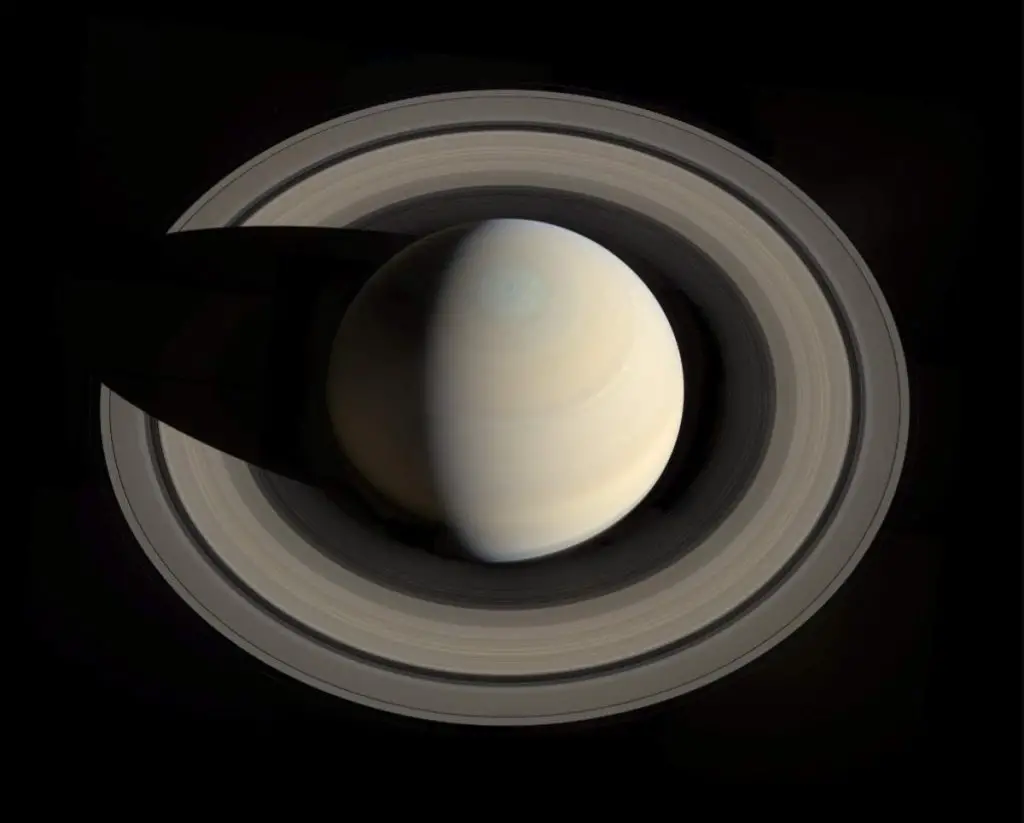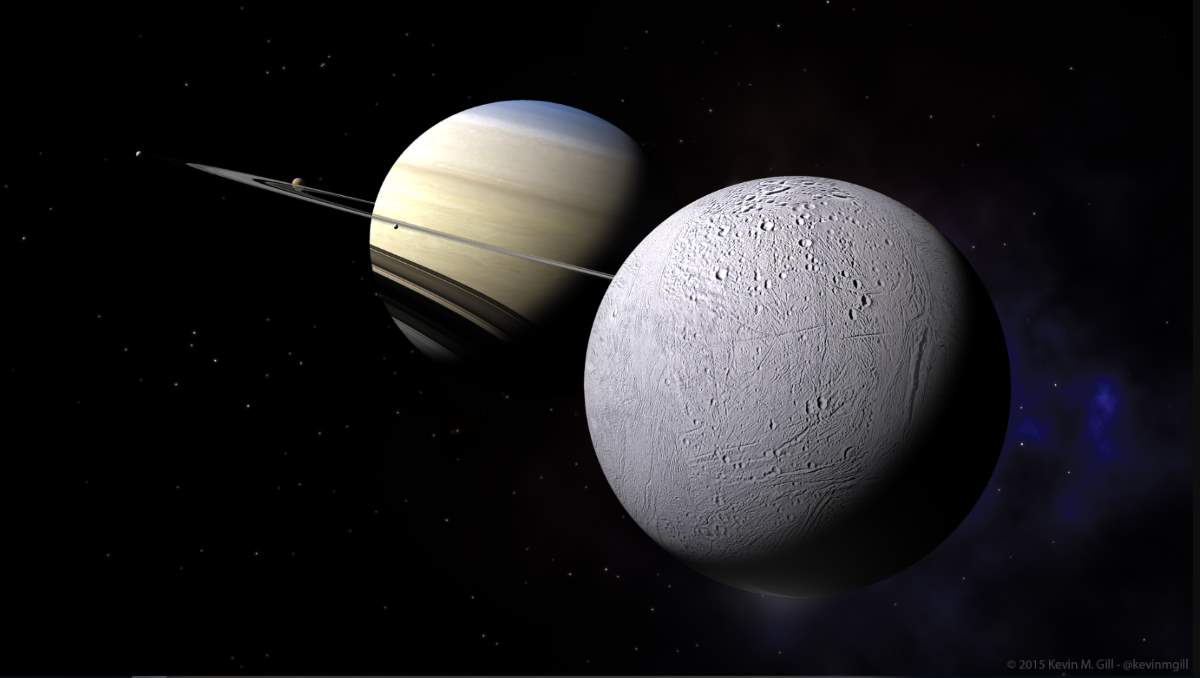NASA Jet Propulsion Laboratory (NASA JPL) has published a great documentary about Casini Spacecraft’s grand voyage (and its finale) around Saturn. Titled “Triumph at Saturn”, the two-part documentary chronicles the story of NASA’s Cassini mission.
Triumph at Saturn: The Journey and Orbit Insertion
- Before Cassini-Huygens (commonly called Cassini), Pioneer 11 and the two Voyagers performed flybys of Saturn: Pioneer 11 on September 1, 1979, Voyager 1 on November 12, 1980, and Voyager 2 on on August 26, 1981.
- Thanks to these flybys, we learned many things about Saturn and its rings. What these missions found left scientists clamoring to go again, and this time not just to pass by, but to stay.
- The new mission, named Cassini-Huygens consisted of two main elements: the ASI/NASA Cassini orbiter, named for the Italian astronomer Giovanni Domenico Cassini (also known as Jean- Dominique Cassini, 8 June 1625 – 14 September 1712), discoverer of Saturn’s ring divisions and four of its satellites; and the ESA-developed Huygens probe, named for the Dutch astronomer, mathematician, and physicist Christiaan Huygens (14 April 1629 – 8 July 1695), discoverer of Saturn’s largest moon Titan. Huygens was also the first scientist who realized that Saturn had rings.
- Cassini spacecraft still remains the largest US interplanetary spacecraft ever built. It was standing three stories tall, and when fully loaded, its weight was 5,712 kg (12,593 lb).
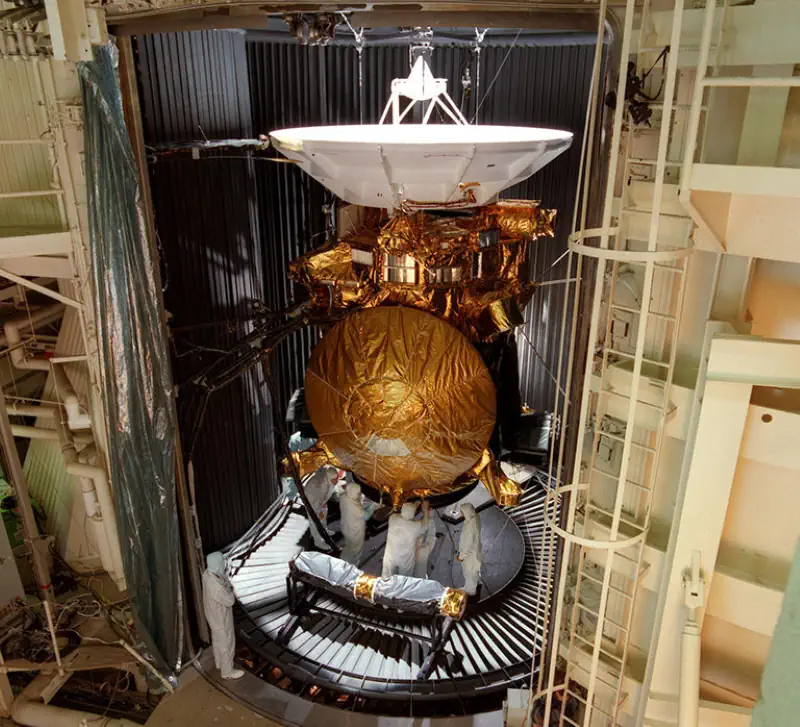
- Cassini-Huygens mission was launched on October 15, 1997 from Cape Canaveral. The mission would place a spacecraft into Saturn’s orbit (Cassini) and land a probe (Huygens) on a moon in the outer solar system (Titan). Both achievements would be the first in history.
- The journey to Saturn would take seven long years. Space is big (see If the Moon Were Only 1 Pixel – A tediously accurate map of the Solar System). On its way, Cassini took four gravity assists (see notes 1): from Venus, then from Earth, then from Venus again, and finally, from Jupiter. The spacecraft traveled over 2 billion miles (more than 3.2 billion kilometers).
- The spacecraft’s software completely changed remotely twice during its journey. How it’s been done?
- Scientists copied current (working) software to the backup computer.
- They made the backup computer the main computer.
- They loaded the new software on the old main (currently backup) computer.
- They tested the new software. After tests, if they were sure enough that the new software was working flawlesly, they switched the two computers again. Now, the main computer had the new software.
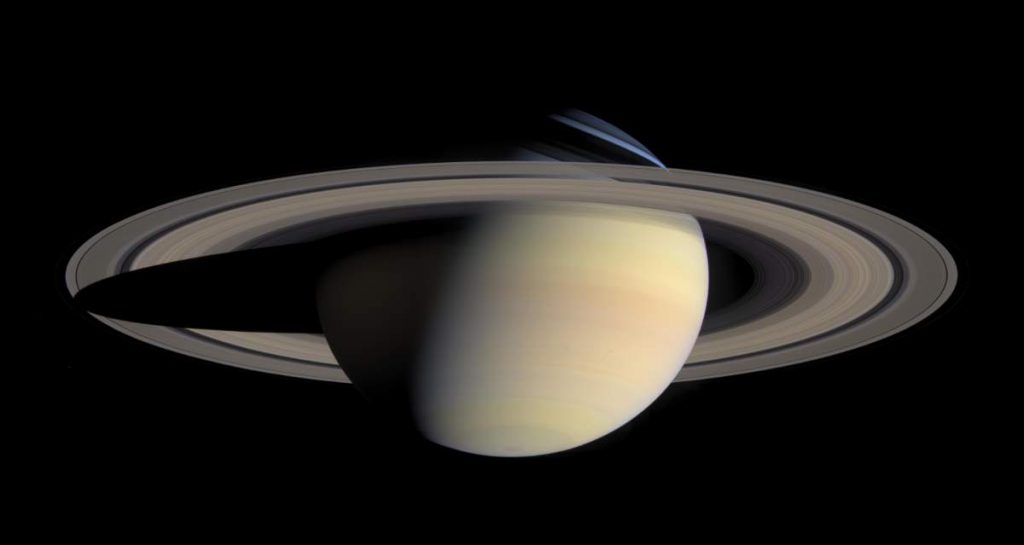
- To slow down enough to be captured by Saturn’s gravity, Cassini would have to turn on its seldom-used engine for 96 minutes. Anything less, there would be a flyby.
- The most dangerous part of Cassini’s journey was SOI – Saturn Orbit Insertion. If something went wrong, the entire mission would be downgraded to just a Saturn flyby.
- Saturn is so far away that it took around three hours to send a command to the spacecraft and to get its response. See: how torturously slow the light speed is.
- The flight path would take the spacecraft up through and back down a gap in Saturn’s rings. So, another concern was particles: it would only have taken one marble-sized particle to have destroyed the spacecraft and ended the mission.
- The Saturn Orbit Insertion worked flawlessly and Cassini was in Saturn’s orbit on July 1, 2004, and became the first spacecraft to orbit Saturn.
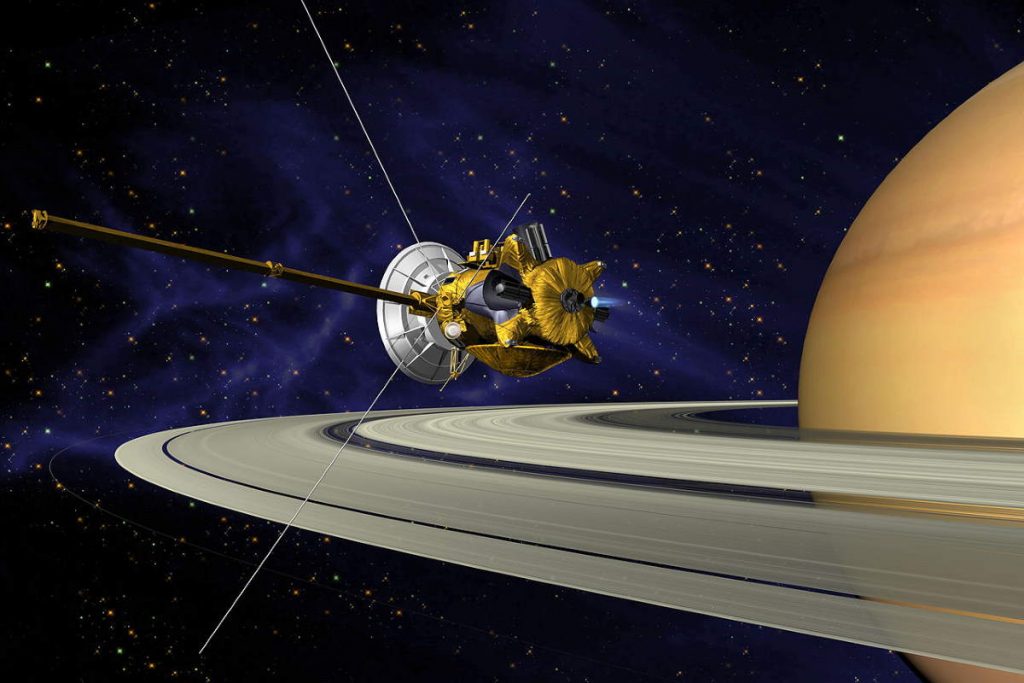
- After the orbit insertion, Cassini started sending close-up images of Saturn’s rings back on Earth that no one had seen that close ever before.
- Cassini’s arrival also coincided with a time when the planet was well-lit by sunlight, providing extraordinary views of the rings.
Triumph at Saturn: Titan
- For some scientists, Saturn’s largest moon, Titan has been a higher priority for exploration than even Saturn itself, or any other planet in the solar system. That’s because Titan may resemble what Earth was like billions of years ago, making this moon a kind of time machine that preserves in deep-freeze many of the conditions that led to life on our planet.
- Titan is the only moon in our solar system that has a dense atmosphere. Furthermore, Titan’s atmosphere is made mostly of nitrogen, just like the Earth. There are smaller amounts of methane and ethane that break down into organic compounds, creating the moon’s smoggy orange haze.
- Titan’s extremely cold temperatures turn some gases into liquids. This led scientists to wonder if could Titan have oceans, made not of water, but of liquid methane and ethane. These questions made Titan a major objective of the Cassini-Huygens mission.
- Actually, years earlier, a design flaw was found on Huygens’ (the Titan lander) receiver. An in-flight test revealed the receiver was incapable of adjusting to Doppler shifts (see notes 2), and changes in radio frequencies. That would leave the Huygens’ data worthless. But, the probe could not be fixed from billions of miles away. Knowing little could be done to Huygens, the hope rested with Cassini. Mission planners realized that adjustments to the spacecraft’s trajectory could minimize radio frequency changes. This required Cassini to fly higher above Titan and at a relatively slower speed which would allow the data to be accurately recorded as the probe descended. But, this solution would cost Cassini a quarter of its reserve fuel.
- Cassini released the Huygens probe on December 25, 2004, on Christmas eve. There’s a JPL (NASA Jet Propulsion Laboratory) saying that “for some celestial reason, major mission events always seem to happen on holidays, weekends, late at night, or a combination of the three”.
- Huygens entered the atmosphere of Titan on January 14, 2005, and after a two-and-a-half-hour descent landed on the solid ground of Saturn’s biggest moon. It still remains the most distant landing ever on another world, and the only landing on a body in the outer solar system.
- Meanwhile, Cassini continued to perform flybys of Titan. Its powerful radar penetrated through Titan’s hazy atmosphere. The radio waves bounced back from the moon’s surface were turned into topographical maps by scientists. Hundreds of deep lakes and seas full of methane have been detected.
- Scientists also mapped an Australia-sized area named Xanadu (this is not its official name, though, see notes 3) that contains mountains and canyons. The area was first identified in 1994 by astronomers using the Hubble Space Telescope at infrared wavelengths.
- Titan may also have volcanoes that gush out an icy mixture of water and other materials. This water comes from an underground ocean. And, naturally, whenever water is mentioned, it’s not long before the question is raised: “is this a place that could possibly support life?”
- Scientists also wonder could the methane lakes and seas of Titan support different kinds of life. There’s still more that was discovered about Titan.
- Titan also has seasons. It rains, not water, but methane. It has a methane cycle just as Earth has a water cycle.
Triumph at Saturn: Enceladus
- Saturn’s icy moon Enceladus was also the main target of special interest for Cassini.
- Enceladus is the most reflective object in the entire solar system.
- Cassini’s ultra-sensitive magnetometer showed evidence of a large salty internal ocean of liquid water in Enceladus.
- One of its closest flybys to the moon, Cassini has found a landscape free of craters in the southern polar region. The area is yet littered with house-sized boulders of water ice.
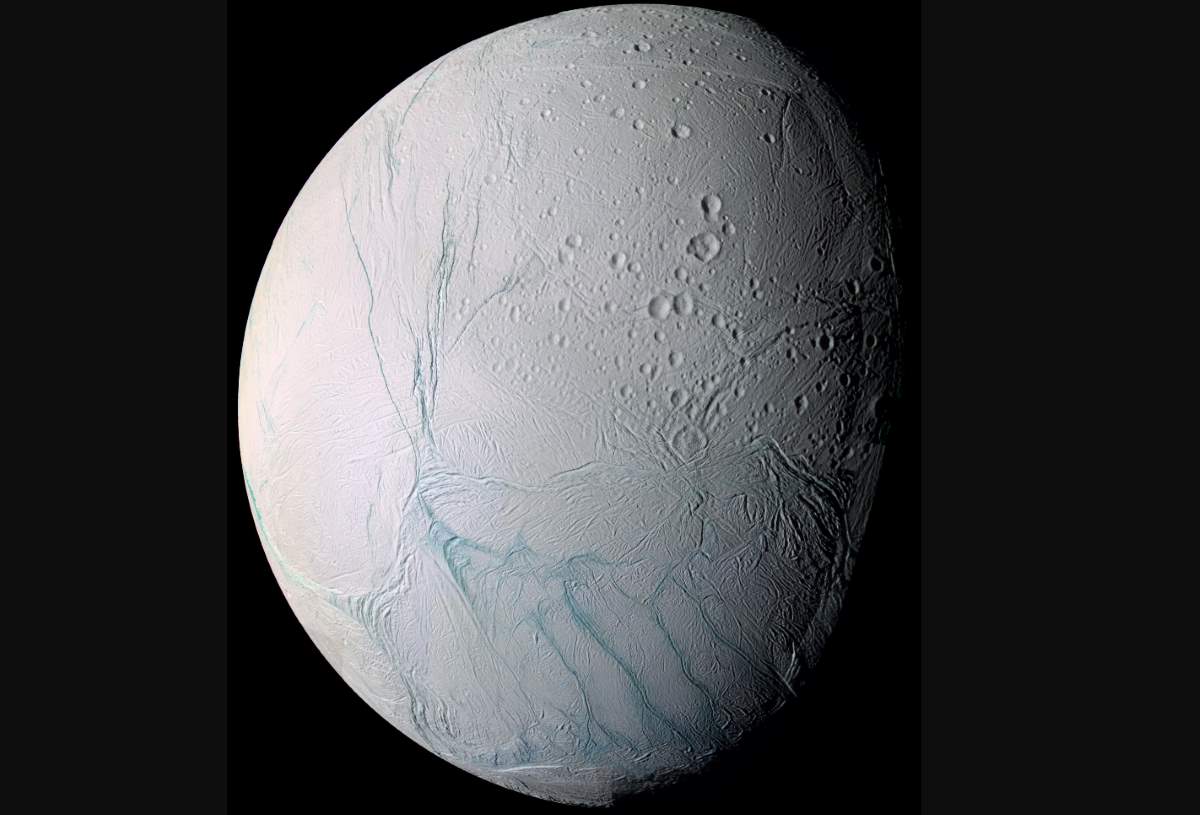
- Cassini data also revealed that the mon was geologically alive. It discovered four sub-parallel, linear depressions in the south polar region, called “tiger stripes” by scientists. Data also showed that these stripes have elevated surface temperatures, indicative of present-day cryovolcanism (a cryovolcano, informally called an ice volcano erupts volatiles such as water, ammonia, or methane instead of lava) on Enceladus centered on the tiger stripes.
- From these stripes, more than a mile deep, geysers are erupting, spraying massive jets of ice particles and water vapor. The existence of these geysers also meant the existence of liquid water near the surface of this bitterly-cold moon (because Enceladus reflects so much sunlight, the surface temperature is extremely cold, about minus 330 degrees Fahrenheit or minus 201 degrees Celsius).
- These discoveries turned Enceladus into a prime target for the remainder of the mission. Some previous plans were tossed aside in favor of more Enceladus flybys, including dramatic plunges through the plumes.
- Enceladus is actually very small, only 157 miles (252 km) in mean radius. So, it was thought that Enceladus lost its internal heat long ago. But, Cassini data showed it was not the case.
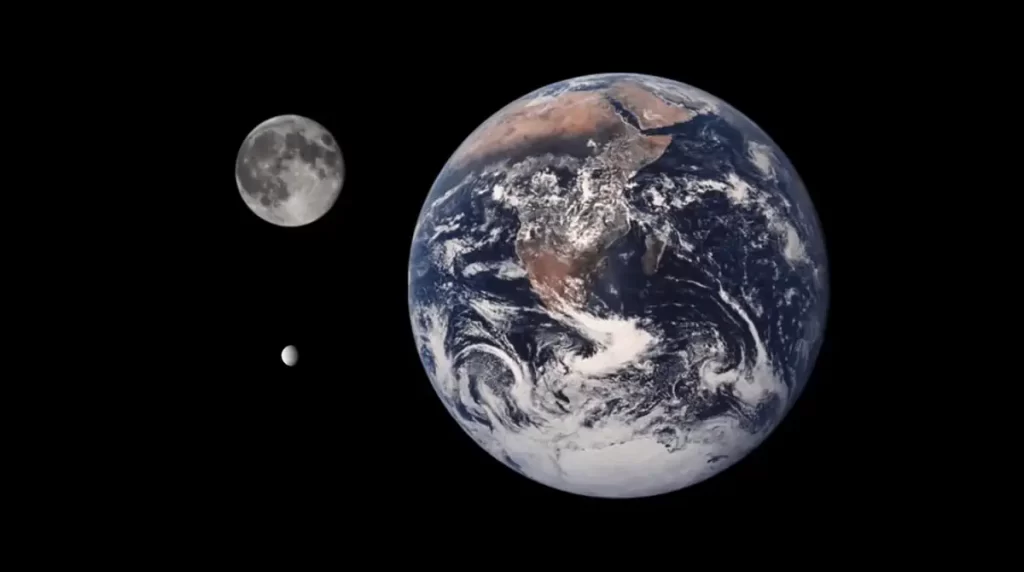
- So, scientists wondered what was causing Enceladus’ plumes to spray out these hot spots. The answer involves Saturn’s massive tidal forces. They create friction inside the moon’s interior, where there is an ocean of water. Liquid from this ocean wells upward, creating the moon’s hotspots and the geysers that went out.
- From these plumes, scientists discovered that Enceladus’ underground ocean contains salts and complex organic molecules likely created by hydrothermal vents, the exact conditions thought to have given rise to life on Earth.
- Thanks to these discoveries, Enceladus is now one of the most promising destinations in the solar system for searching for alien life.
Triumph at Saturn: orbiting the gas giant
- Over the course of 13 years, Cassini has orbited Saturn 294 times. Determining the routes of these orbits is the work of true rocket scientists.
- Designing a route through the maze of Saturn’s many moons and its ring system is a complex mathematical task.
- There were a lot of scientists, a lot of teams, and a lot of scientific goals, and the orbit planners’ job was to make everyone as equally happy as possible, or, as one of the engineers pointed out, “equally unhappy”. It was stressful most of the time.
- While orbiting Saturn, Cassini also captured iconic photos of Earth.
Triumph at Saturn: it’s full of moons
Science projects are tremendously important for understanding of the solar system. Who knows? One day, our survival on Earth may depend on what we discovered out there.
Arthur C. Clarke (16 December 1917 – 19 March 2008), the English science-fiction writer, science writer, and futurist.
- When Cassini was launched, we knew only 18 confirmed Saturnian moons. Now, Cassini data showed there are at least 82 moons orbiting the gas giant.
- The Iapetus flyby mainly focused on the equatorial mountain ridge that contributes to the moon’s unusual walnut shape.
- Iapetus’ mountains, made mostly of ice, are among the tallest in the solar system with some of them soaring 12 miles (20 km) high, more than twice that of Mount Everest.
- One theory suggests that they were formed when Iapetus was hot and more fluid and pliable, and it was spinning very fast. So a bulge appeared in the equator, and as the moon cooled off, these mountains held in that shape.
- One side of Iapetus is as black as charcoal and it was a mystery since the time of Voyagers. Cassini also solved that puzzle. It turned out that dust from Phoebe, an irregular satellite of Saturn with a mean diameter of 213 km (132 mi) raining down on one side of Iapetus, coating that side in almost charcoal-black material.
- This black material absorbs heat from the sun, turning the moon’s water ice into a vapor that accumulates like snow, falling on the trailing side of Iapetus. The result is the moon’s distinct yin and yang veneer.

Triumph at Saturn: the gas giant itself. Some amazing Saturn facts
- Saturn is the second-largest planet in our solar system, after Jupiter. It has a diameter of 116,460 km (72,365 miles).
- In volume, Saturn could hold more than 700 Earths.
- Saturn has no solid surface. It is composed mostly of helium and hydrogen gases.
- Deep within there’s a dense core of metals, though, scientists think.
- Despite its size, Saturn is astonishingly light and less dense than water. If it could be placed in an imaginary giant bathtub, Saturn would float.
- It is also spinning fast: a Saturn day is only 10.5 hours long. This rapid rotation causes the planet to bulge out at the equator and flatten at the poles.
- From a distance, Saturn may appear calm. But, beneath the cloud tops, there is a churning cauldron of lightning with wind speeds that can reach over 1000 mph (1600+ km/h). At about 30 earth years, Saturn experiences a mega-storm, and Cassini had the good timing to witness one. This raging storm would grow to encircle the entire planet.
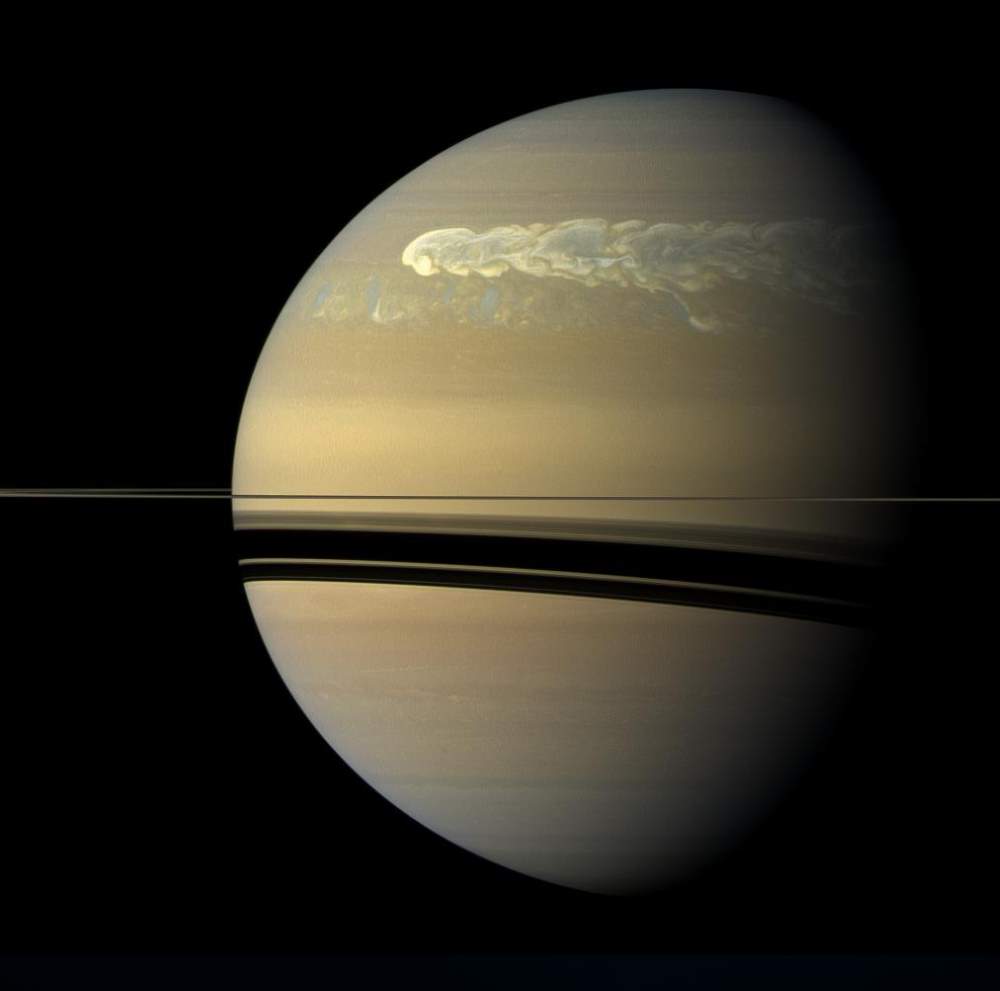
- Even more amazing is what can be seen at Saturn’s poles. It has a hexagon circling the north pole. This hexagon is a six-sided jet stream. It’s about two-earth diameters in size and it’s very stable. It’s been there for many decades.
- At the very center of the hexagon, there’s a giant hurricane that is about half the size of the Continental United States, with wind speeds of over four times a typical hurricane-force wind.
- A second monster storm was discovered at Saturn’s south pole. It is also ringed with towering clouds but lacks a hexagon.
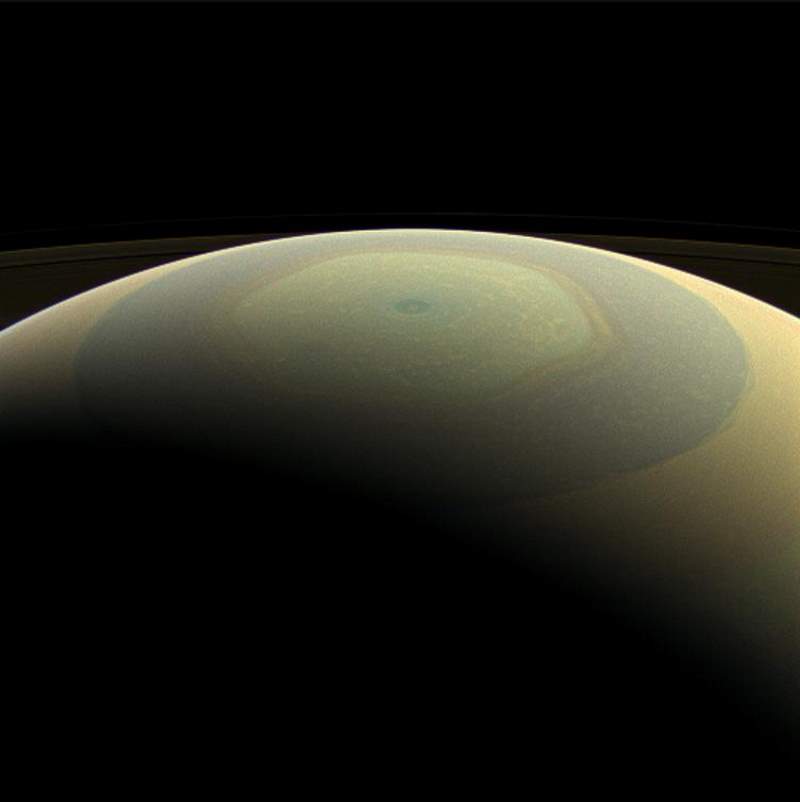
Triumph at Saturn: Gateway to the Grand Finale
Back in 2008, the first human on the Moon, Neil Armstrong published a message about the Cassini mission:
It has been said, “science is about what is, and engineering is about what can be”. The Cassini-Huygens program has demonstrated the best of both. And you are the people who made it enormous success that it has been, and is. Some of you are in science of “what is”, unraveling the secrets of the Saturnian system. Someone’s had a full-time job of just counting the moons. The number of your new discoveries is nothing short of amazing. Some of you were in the “what can be” category. You were involved in the design of the spacecraft, and the trajectories, system design, and operation, instrumentation, how to make the measurements, programming the computers. We all give you very best wishes to continue your outstanding performance. Congratulations to each and every one of you.
Neil Armstrong (August 5, 1930 – August 25, 2012)
- Cassini’s original mission duration was four years at Saturn. The mission more than doubled that.
- In 2017, 20 years after its launch, the spacecraft was still performing beyond expectations.
- Yet, Cassini’s days were now numbered because it was running out of fuel.
- Before that happens, the spacecraft has to be sent on a course that will ensure it will not crash into one of Saturn’s moons that may harbor life, to avoid contamination.
- It’s room temperature inside the spacecraft, so a hardy microbe could easily have hitched a ride-along.
- It was decided to end the mission by plunging Cassini into Saturn – but not before attempting to dive 22 times between the planet and the rings. A place no spacecraft has ever been. These were also very risky manoeuvers. Cassini survived all these dives while providing tons of important scientific data.
- 48:30
Triumph at Saturn: the Grand Finale of Cassini
- After two decades in space, NASA’s Cassini spacecraft reached the end of its remarkable journey of exploration.
- On September 15, 2017, Cassini plunged into Saturn’s atmosphere and disintegrated, returning science data to the very end. When the signal stopped, there were no cheers at the JPL, everybody was silent and sad.
- Project manager Earl Maize made a short speech with a sad voice: “I hope you’re all deeply proud of this amazing accomplishment. Congratulations to all. This has been an incredible mission and incredible spacecraft. And you’re all an incredible team. I’m gonna call this the end of the mission.” Then everybody burst into tears.
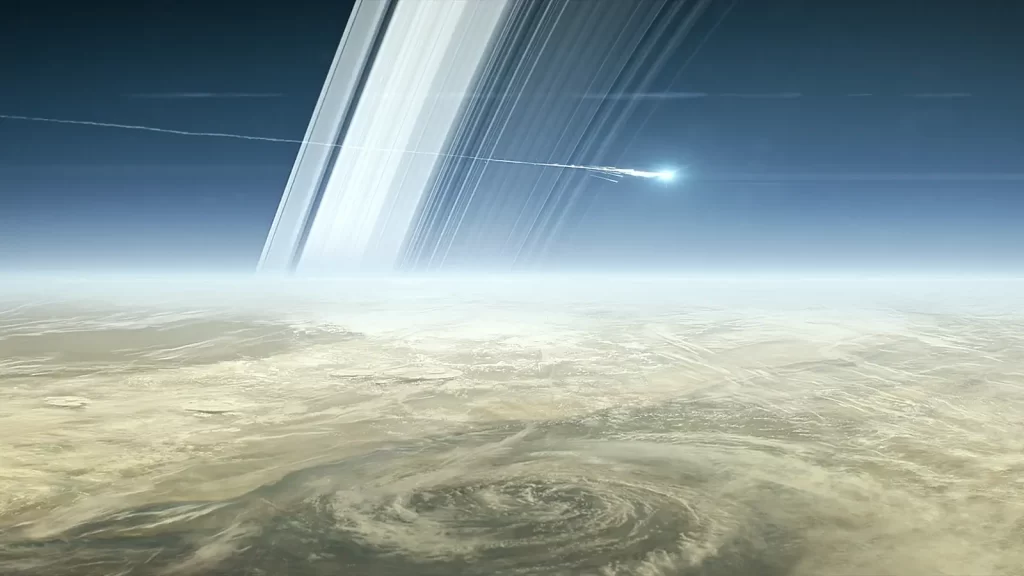
Triumph at Saturn: And the Emmy goes to… Cassini’s Grand Finale!
NASA’s JPL has won its first-ever Emmy Award for Outstanding Original Interactive Program for its coverage of the Cassini mission’s Grand Finale at Saturn. The award was presented Saturday, September 8, 2018, at the Creative Arts Emmy Awards in Los Angeles by the Academy of Television Arts & Sciences.

- The Cassini mission actually not ended. During its mission, it has radioed almost 139 Gigabytes of scientific data to Earth. Analyzing this data will take years. Scientists still make new discoveries using data sent by Cassini. For example, in 2019, by analyzing Cassini data, scientists discovered that Saturn’s rings are relatively young, formed between 10 million and 100 million years ago.
Notes
1. Gravity Assist
In orbital mechanics and aerospace engineering, a gravitational slingshot, gravity assist maneuver, or swing-by is the use of the relative movement and gravity of a planet or other astronomical object to alter the path and speed of a spacecraft (speed it up or slow it down), typically to save propellant, reduce expense, and make the journey duration as minimum as possible.
2. Doppler Effect
Named after the Austrian physicist Christian Doppler (29 November 1803 – 17 March 1853), who described the phenomenon in 1842, the Doppler effect or Doppler shift is the change in frequency of a wave in relation to an observer who is moving relative to the wave source.
Imagine you are standing in the middle of a road and a car is coming towards you. The driver sounds the horn so that nothing unpleasant happens, and you hear the horn very loudly, at a high pitch, and step out of the way. However, as the car moves away from you, the sound of the horn seems to change even though the source itself does not.
The reason behind this phenomenon can be explained by the Doppler effect.
Doppler effect or Doppler shift has a lot of practical applications, for example, it is used in astronomical measurements.
3. Xanadu
The name Xanadu comes from an alternate transcription of Shangdu, the summer capital of the Yuan dynasty established by Kublai Khan and made famous by the English poet Samuel Taylor Coleridge (21 October 1772 – 25 July 1834). During 1797 and 1798, Coleridge composed a symbolic poem named Kubla Khan, written about the Mongol emperor Kublai Khan and his legendary palace at Xanadu (Shangdu).
Sources
- Cassini mission page on the NASA website
- Cassini-Huygens on Wikipedia
- “Documentary Series: JPL and the Space Age” on the NASA Jet Propulsion Laboratory website
- Tiger stripes (Enceladus) on Wikipedia
- Titan on Wikipedia
- “And the Emmy goes to: Cassini’s Grand Finale” on jpl.nasa.gov
- How Many Elephants are Left in the World in 2025? - August 17, 2025
- Moon Landings: All-Time List [1966-2025] - February 2, 2025
- What Is Max-Q and Why Is It Important During Rocket Launches? - January 16, 2025

